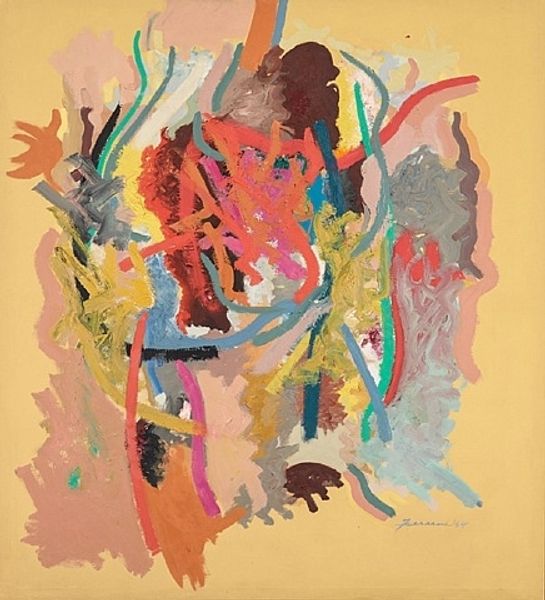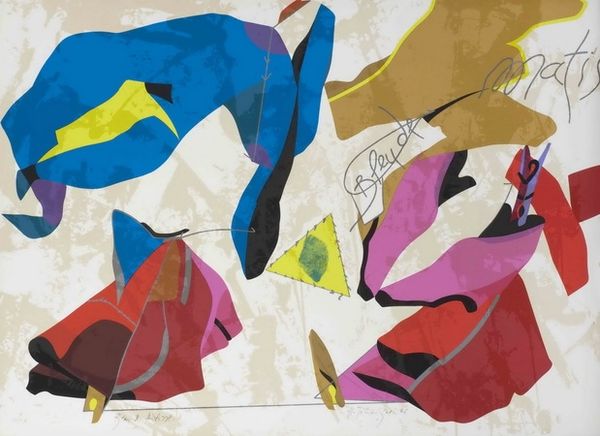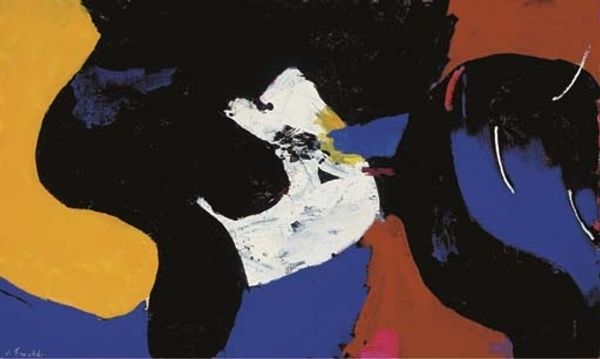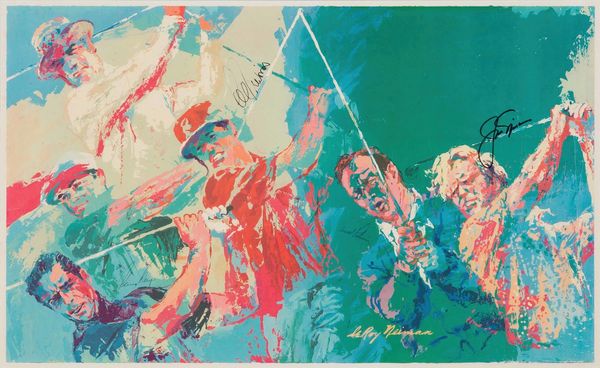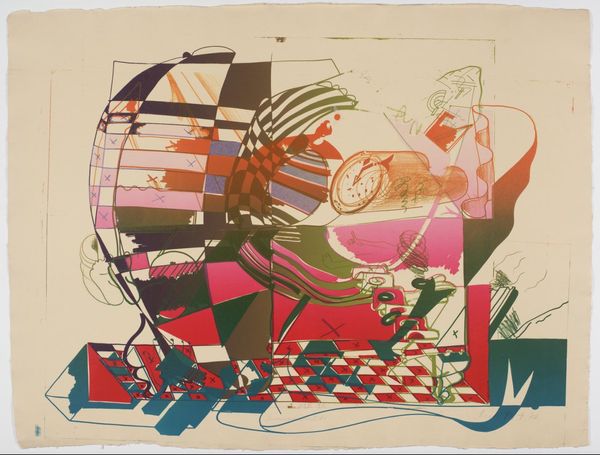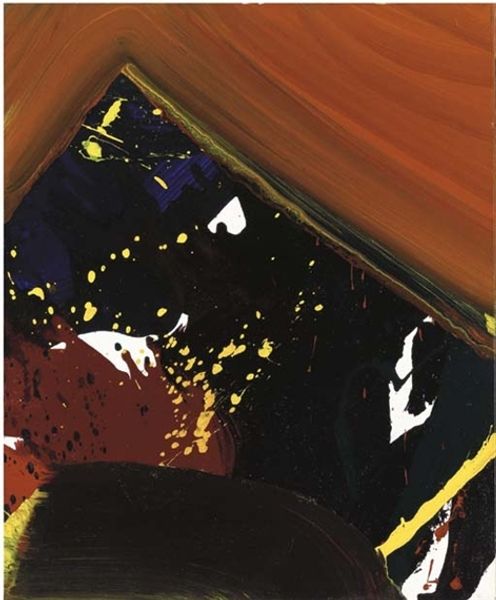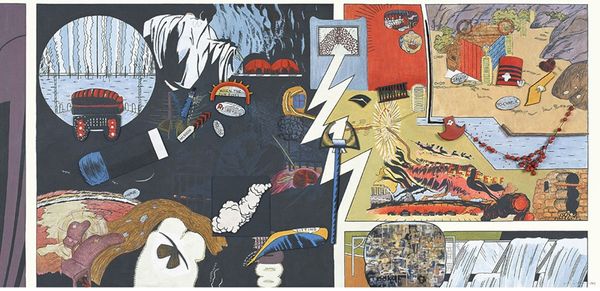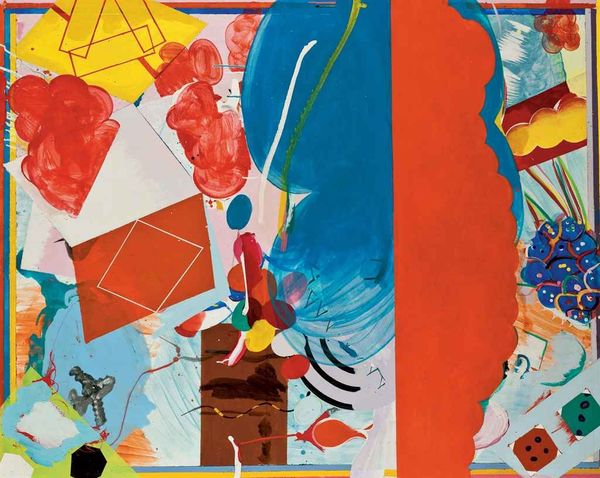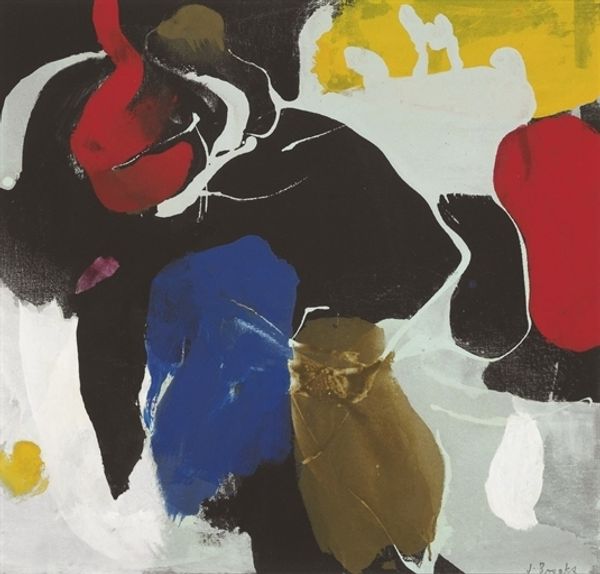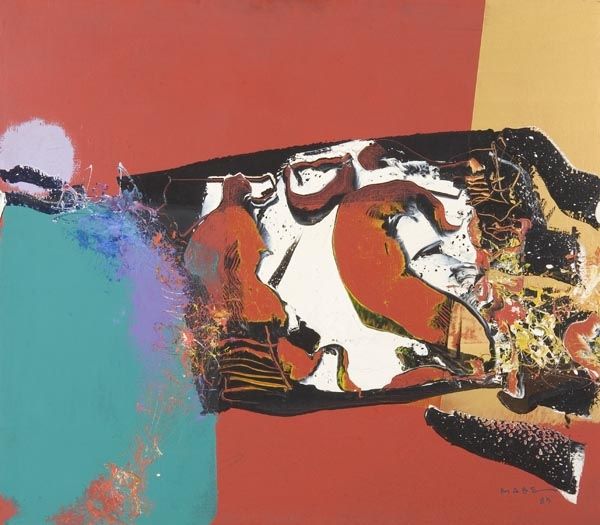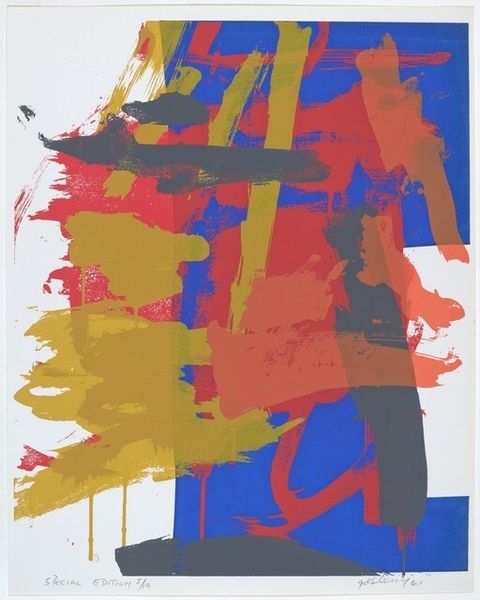
Dimensions: image: 67.95 × 95.25 cm (26 3/4 × 37 1/2 in.) sheet: 78.42 × 103.82 cm (30 7/8 × 40 7/8 in.)
Copyright: National Gallery of Art: CC0 1.0
Curator: Standing before us is Romare Bearden's "Untitled (Jazz II)" created in 1980, a vibrant collage and print work. What are your initial thoughts on this piece? Editor: Well, first off, I’m immediately struck by its disjointed, almost Cubist fragmentation, and the energy emanating from the depiction of jazz musicians in mid-performance, somehow both dynamic and still. The color choices are intense, particularly that unapologetic pink background. Curator: The interplay of geometric forms certainly dictates how the composition is perceived; horizontal bands dissecting the pictorial field invite our eyes to reconstruct a unified scene from fragmented elements. There's a structured rhythm to the abstraction itself. Editor: But I'm also considering the material components. The piece has a decidedly gritty quality to it. The textures of the various printed materials—likely culled from mass-produced sources—contrasts with the artistic labor invested in its construction. Were these printed materials chosen at random or were they selected and curated, in what factory they were printed, etc.? Curator: That’s insightful, it definitely pushes the viewer beyond just appreciating the flat picture plane to thinking of the work's depth and history. How it reflects upon the semiotics of representation—using abstraction to portray music. Editor: And that contrast underscores, for me, something crucial. This is artwork built upon labor; of musicians and artist combined and, in a sense, their relationship with the art industries which facilitated production of musical instruments and printed material and artistic construction of "Untitled (Jazz II)" itself. It blurs any clear boundary between production, process and intention. Curator: Indeed, considering Bearden's strategic placement of abstract elements within his jazz motif suggests a complex exploration of aesthetic form and musical representation; he orchestrates visual intervals comparable to rhythmic changes within jazz. Editor: Exactly, there’s a critical material presence and a dialogue about art’s own means of production. It makes us think about who makes art, how it's circulated, and whose stories are told. Curator: "Untitled (Jazz II)" clearly reveals a structural logic interwoven with rich symbolic play. Editor: It's the synthesis of all these productive tensions –the material processes, artistic agency, and representation that makes Bearden's print and collage so compelling.
Comments
No comments
Be the first to comment and join the conversation on the ultimate creative platform.
